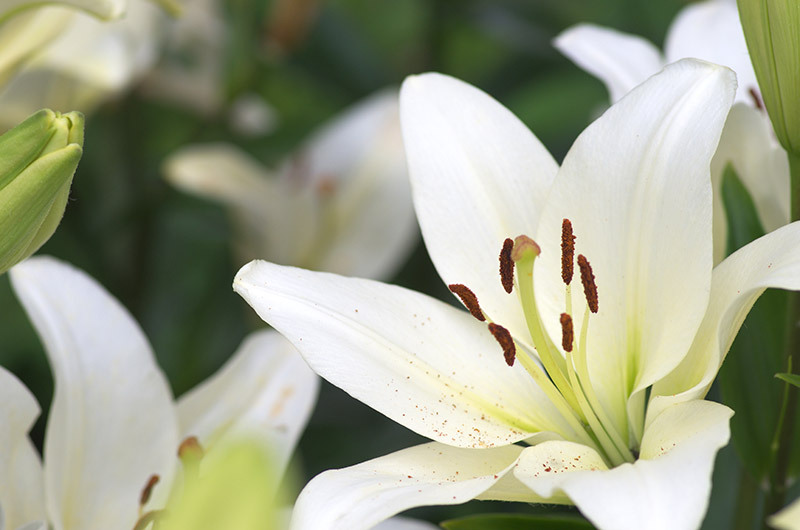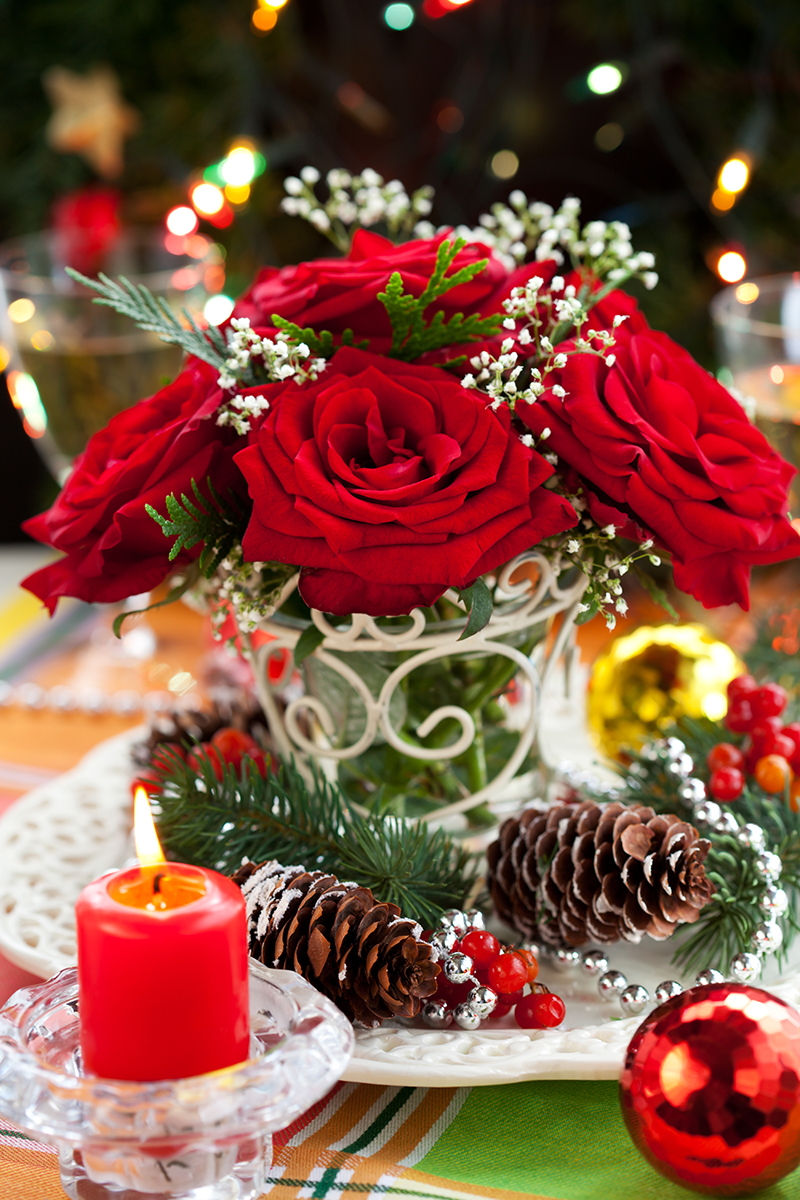Achieve Long-Lasting Poinsettia Beauty with Minimal Effort
Posted on 03/09/2025
Achieve Long-Lasting Poinsettia Beauty with Minimal Effort
Poinsettias are beloved holiday plants known for their vivid red, pink, white, and variegated bracts. Yet, for many plant lovers, these vibrant beauties often wilt and fade soon after the festivities have ended. Fortunately, you can achieve long-lasting poinsettia beauty with minimal effort by following a few simple, expert strategies. This comprehensive guide covers everything from poinsettia care tips to troubleshooting problems and extending your poinsettia's life, so you enjoy their splendor well into the new year--and beyond.
Understanding the Poinsettia: Origins and Characteristics
Poinsettias (Euphorbia pulcherrima) hail from Mexico and Central America, where they grow as small shrubs. The eye-catching "flowers" are actually brightly colored bracts, or modified leaves, that surround tiny clusters of yellow true flowers called cyathia.
- Scientific name: Euphorbia pulcherrima
- Common name: Poinsettia
- Origin: Mexico and Central America
- Colors: Red, white, pink, marbled, speckled, and more
- Bloom time: Winter--especially late November through December
The long-lasting beauty of poinsettias can significantly brighten your home during winter's gloom, serving as colorful festive decor long after the holidays.

Choosing the Best Poinsettia for Lasting Beauty
Begin your journey to effortlessly beautiful poinsettias by purchasing a healthy specimen. At the store or nursery, inspect poinsettias carefully before bringing one home.
What to Look For When Buying a Poinsettia
- Vibrant bracts: Look for fully colored and firm bracts, avoiding plants with browning or wilted leaves.
- Healthy green foliage: Leaves should be lush and undamaged, without yellowing or spots.
- Unopened cyathia: The tiny yellow flowers in the center should be mostly closed. Plants with open or fallen cyathia are further past their prime.
- No signs of pests: Check under leaves for insects or sticky residue.
- Avoid exposed plants: Poinsettias are sensitive to cold; never buy plants displayed in drafty entryways or outdoors in chilly weather.
Effortless Poinsettia Care: The Essentials
Minimal effort, maximum results! These simple yet effective poinsettia care tips ensure your plant thrives for months:
Ideal Light for Poinsettias
- Bright, indirect sunlight: Place your poinsettia near a sunny window, but out of direct midday rays to avoid scorched bracts.
- Avoid drafts: Keep away from doors, vents, or radiators. Poinsettias dislike temperature swings and dry blasts of air.
Watering Your Poinsettia--The Smart Way
- Allow the soil's surface to dry: Wait until the top inch or two of soil feels dry before watering.
- Water thoroughly: Water until excess drains through the bottom. Never allow your poinsettia to sit in standing water--empty saucers promptly.
- Check pot coverings: Decorative foil can trap moisture. Punch holes or remove the wrap for proper drainage.
Temperature & Humidity Needs
Poinsettias prefer temperatures between 60 and 70?F (15-21?C) during the day, and a bit cooler at night (down to 55?F or 13?C). Avoid temperature dips below 50?F (10?C) or rapid changes, which can cause leaf drop.
- Moderate humidity: If your home is dry, increase humidity by grouping plants or using a pebble tray with water.
Feeding--is it Necessary?
- No fertilizer needed: During the holiday season, fertilizer is unnecessary. If you wish to keep your poinsettia beyond the holidays, begin monthly feeding in spring with a balanced liquid fertilizer.
Pro Tips for Keeping Your Poinsettia Beautiful Longer
With just a few extra minutes of attention, you can maximize your poinsettia's life and vibrant appearance:
- Rotate regularly: Turn the pot every few days for even light exposure and consistent growth.
- Remove yellowing leaves: Pinch or snip off any fading, yellow, or dropping leaves to maintain appearance and plant health.
- Avoid ethylene gas: Place poinsettias away from fruit bowls--ripening fruit emits ethylene, which speeds up aging and drop of the bracts.
- Check for pests weekly: Look for whiteflies or aphids; gently wash them off or treat with insecticidal soap if needed.
Common Poinsettia Problems & Quick Solutions
- Wilting leaves? Check if the soil is too dry or if roots are waterlogged; adjust watering accordingly.
- Sudden leaf drop? Usually due to cold drafts, overwatering, or abrupt temperature changes--relocate and monitor conditions.
- Pale or faded bracts? Move to a brighter spot, but avoid harsh midday sun.
- Sticky leaves? Likely a pest issue; rinse and treat as needed.
Creative Ways to Showcase Your Poinsettias All Season
Poinsettias aren't just for tabletops! Let your show-stopping long-lasting poinsettia display become a central feature in your home's winter decor:
- Clustered arrangements: Place multiples in different sizes or colors for a striking mantelscape or entryway wow-factor.
- Floral centerpieces: Combine cut poinsettia stems with evergreens in vases for stunning table settings.
- Hanging baskets: Try smaller potted poinsettias in hanging displays for a unique twist.
- Gift decor: Add miniature poinsettias to wrapped gifts for an extra-special touch.
After the Holidays: Extending Your Poinsettia's Life
With the holiday season over, many people discard their poinsettias. But with minor effort, your poinsettia can remain an attractive houseplant for months or rebloom the next year!
Pruning and Ongoing Care
- When bracts fade: In late winter or early spring, cut the plant back to 4-6 inches above the soil. This encourages new, compact growth.
- Keep watering: Continue to water when the surface dries. Move to a slightly less bright spot if leaf production slows.
- Feed monthly: In late spring, start fertilizing with a balanced, water-soluble fertilizer.
- Repot if necessary: If the plant becomes root-bound, move to a slightly larger container in the spring.
How to Rebloom Your Poinsettia Next Season
For the ultimate long-lasting poinsettia beauty, encourage your plant to bloom again next winter! Reblooming does require some planning, but it's feasible even for beginners:
Step-by-Step: Reblooming Poinsettias with Minimal Effort
- Spring & Summer: Keep your pruned plant in bright, indirect light. Move outdoors to a shaded patio once frost risk passes. Continue regular watering and feeding.
- Late Summer: In late August, move the poinsettia back indoors before nighttime temperatures drop below 55?F (13?C).
- Initiate Darkness Period: Poinsettias need unbroken darkness for 14 hours each night from late September for 8-10 weeks to set blooms.
- Cover the plant: Either relocate it to a dark closet or cover with a box or thick cloth each evening from 5 p.m. to 7 a.m. Expose to bright light between 7 a.m. and 5 p.m.
- Bracts develop: By late November, colorful bracts and buds begin appearing. Return your poinsettia to regular indoor display and enjoy another season of beautiful blooms!

Frequently Asked Questions About Poinsettia Care & Longevity
Are poinsettias poisonous to pets or people?
Contrary to popular myth, poinsettias are only mildly toxic. If ingested, they may cause mild stomach upset or skin irritation. Still, keep them out of reach of pets and children.
Can I plant my poinsettia outdoors?
In USDA zones 9-11, poinsettias can become 10-foot landscape shrubs. In colder areas, treat as houseplants or annuals.
Why do my poinsettia's leaves keep falling off?
Leaf drop is usually a response to overwatering, cold drafts, or sudden environmental shifts. Adjust care routines to match your home's conditions.
How long can a healthy poinsettia last?
With attentive care, your poinsettia's colorful bracts can last well into spring, providing four to six months of beauty. Well-tended plants can live for many years!
Conclusion: Enjoy Effortlessly Long-Lasting Poinsettia Beauty Year After Year
Achieving long-lasting poinsettia beauty with minimal effort is within the reach of every plant lover. By understanding your plant's basic needs--bright, indirect light, proper watering, stable temperatures, and a little ongoing maintenance--you can enjoy the striking colors and charm of poinsettias long after the holidays are past. Even better, with a small investment of time, you'll be rewarded with a healthy, flowering poinsettia year after year. Display with pride and delight in the transformative power of simple, smart plant care!
Looking for more indoor plant wisdom? Keep learning smart, practical tips to nurture all your houseplants and make your home a verdant, welcoming sanctuary--season after season.
```Latest Posts
The Best Florists Near [POSTCODE/NEIGHBOURHOOD]: A Local Review
Choosing Allergy-Friendly Flowers for Homes in [AREA]
Achieve Long-Lasting Poinsettia Beauty with Minimal Effort






